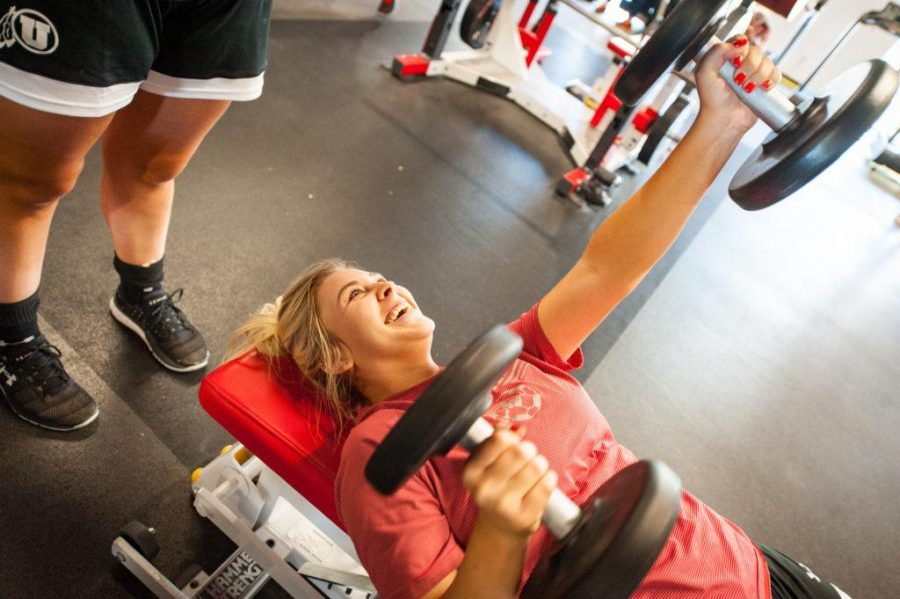In almost any sport, most people only see what is on the field. But what a lot of people miss is what goes on off the field. For soccer, a lot more goes into the sport than what meets the eye. According to the strength and conditioning coach for women’s soccer, Cody Lockling, weight room training for soccer players is often not understood.
“There are a lot of misconceptions about what we do,” Lockling said. “It’s not just about getting strong sometimes. Although there are reasons why we want to get stronger, and it’s not always working hard, but working smarter and sometimes that gets misinterpreted.”
The purpose of strength and conditioning in the weight room is to build a more physically prepared and more physically durable athlete. Lockling explained that it was discovered a long time ago that as athletes get stronger, a lot of the time they start to perform better — they start to run faster and jump higher.
With that in mind, Lockling said that the players can become better in terms of changing direction because they are able to resist the gravitational forces when they make a quick turn or change of direction.
In addition to building a more physically prepared and more physically durable athlete, Lockling added that he started to find out that when athletes are stronger, they tend to get injured less, within reason. Athletes with stronger muscles tend to be less susceptible to soft-tissue related injuries.
“There are things we can do in the weight room that we can do in terms of teaching them certain movement patterns that might help them stay a little bit healthier,” Lockling said. “It puts them at a a little bit less risk of some traumatic injuries like knee injuries.”
Weight room training allows the player to do things like push back at the ground when they perform, preventing injuries, like twisting a knee in a bad position, leading to an ACL tear. As Lockling said, stronger athletes tend to be more durable.
Though there are a lot of similarities on the field and in the weight room, according to head coach Rich Manning, there is one big difference from what he does on the field with his team versus what Lockling does in the weight room.
“The biggest difference is the ball,” Manning said. “We spend a lot of time with the ball, so if I had to sum it up in one word what the difference is between what I do on the field compared to what Cody does in the weight room, I would say ball.”
But for Lockling, the difference for him is that while the team focuses on the aspect of soccer-playing on the field, he focused on general, physical quality of a human being in the weight room.
“I can make them faster or stronger, but that doesn’t mean that I make you a better athlete — I can’t make them a better, more skilled soccer player that is related to your ball skills. I can make you stronger which might make you kick the ball harder, but it’s not going to make you a better player.”
Since soccer practices year-round, Lockling cycles his training in order to accommodate the different phases the team goes through. Right now, Lockling is focusing on keeping his athletes healthy and on the field. In season for those who are playing a lot, it comes down to maintaining some of the physical qualities that were developed during off-season and preseason.
Even with the vigorous training the teams goes through, Lockling emphasized the importance of recovery days. The human body, if stressed all the time — physically, psychologically and emotionally — would be at a constant state of alarm. The body has a certain process in the way it responds to stress, whether it be physical or emotional.
“Your body responses in a certain way,” Lockling said. “Just like when you’re sick, you go through a time where you are beaten up a little bit and you are more susceptible to injury. If you don’t give yourself time to recover, you can run a greater risk of injury because you haven’t allowed for adequate recovery time.”
Since the players are getting stress every week through games and practice, Lockling doesn’t do a lot to physically stress them or challenge them any more than they already are on the field.
“Our season is 52 weeks a year and right now we are in week 47,” Lockling said. “So they need to rest up so they can continue strong in Pac-12 play.”
@emileewhiteee


